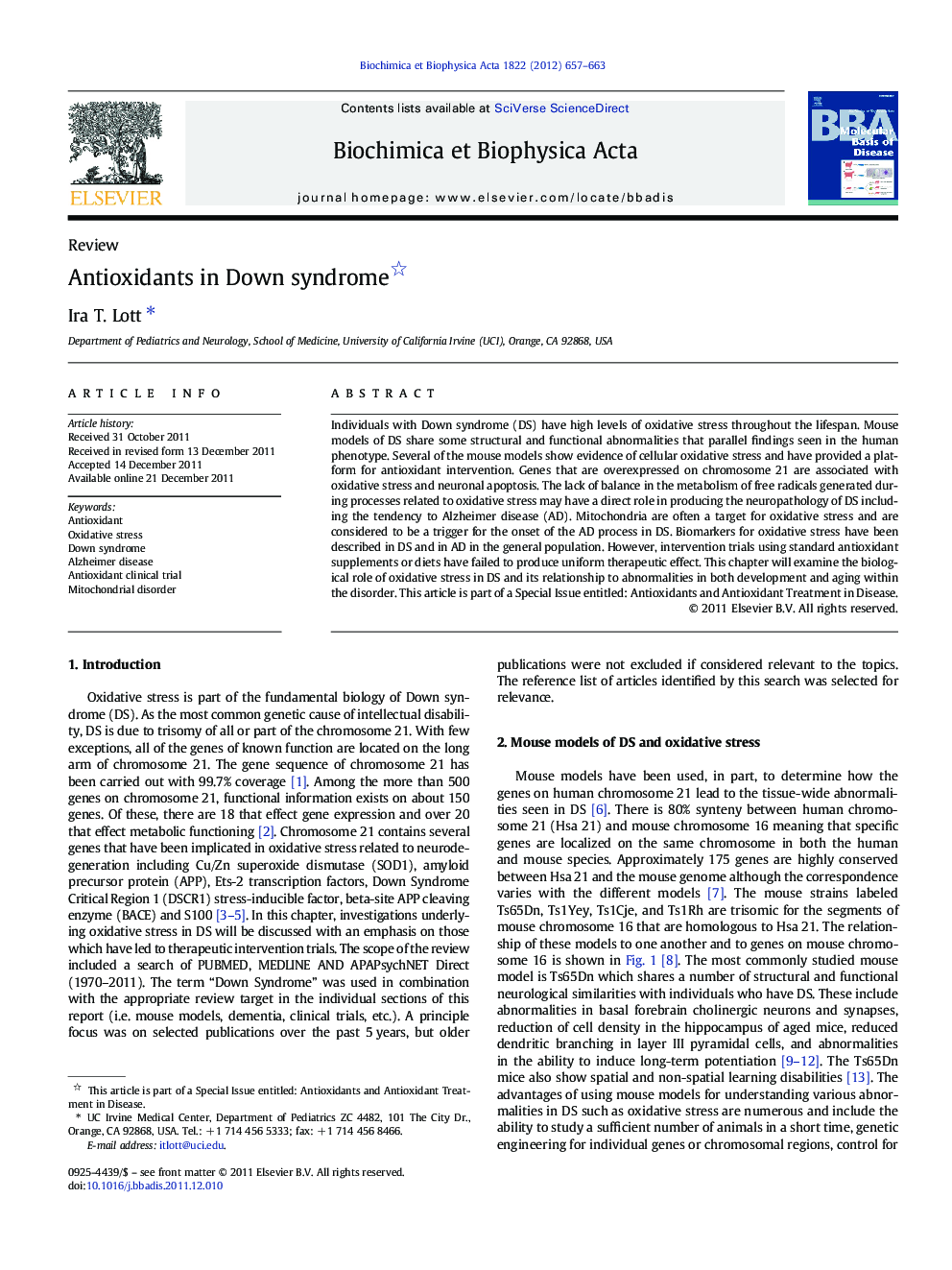| Article ID | Journal | Published Year | Pages | File Type |
|---|---|---|---|---|
| 1905043 | Biochimica et Biophysica Acta (BBA) - Molecular Basis of Disease | 2012 | 7 Pages |
Individuals with Down syndrome (DS) have high levels of oxidative stress throughout the lifespan. Mouse models of DS share some structural and functional abnormalities that parallel findings seen in the human phenotype. Several of the mouse models show evidence of cellular oxidative stress and have provided a platform for antioxidant intervention. Genes that are overexpressed on chromosome 21 are associated with oxidative stress and neuronal apoptosis. The lack of balance in the metabolism of free radicals generated during processes related to oxidative stress may have a direct role in producing the neuropathology of DS including the tendency to Alzheimer disease (AD). Mitochondria are often a target for oxidative stress and are considered to be a trigger for the onset of the AD process in DS. Biomarkers for oxidative stress have been described in DS and in AD in the general population. However, intervention trials using standard antioxidant supplements or diets have failed to produce uniform therapeutic effect. This chapter will examine the biological role of oxidative stress in DS and its relationship to abnormalities in both development and aging within the disorder. This article is part of a Special Issue entitled: Antioxidants and Antioxidant Treatment in Disease.
► Individuals with Down syndrome have high levels of oxidative stress throughout life. ► Oxidative stress may play role in pathogenesis of Alzheimer disease in Down syndrome. ► Mitochondrial dysfunction occurs at early age in Down syndrome. ► Mitochondrial dysfunction is impacted by and creates oxidative stress. ► Prophylactic interventions with antioxidant supplements might be beneficial.
